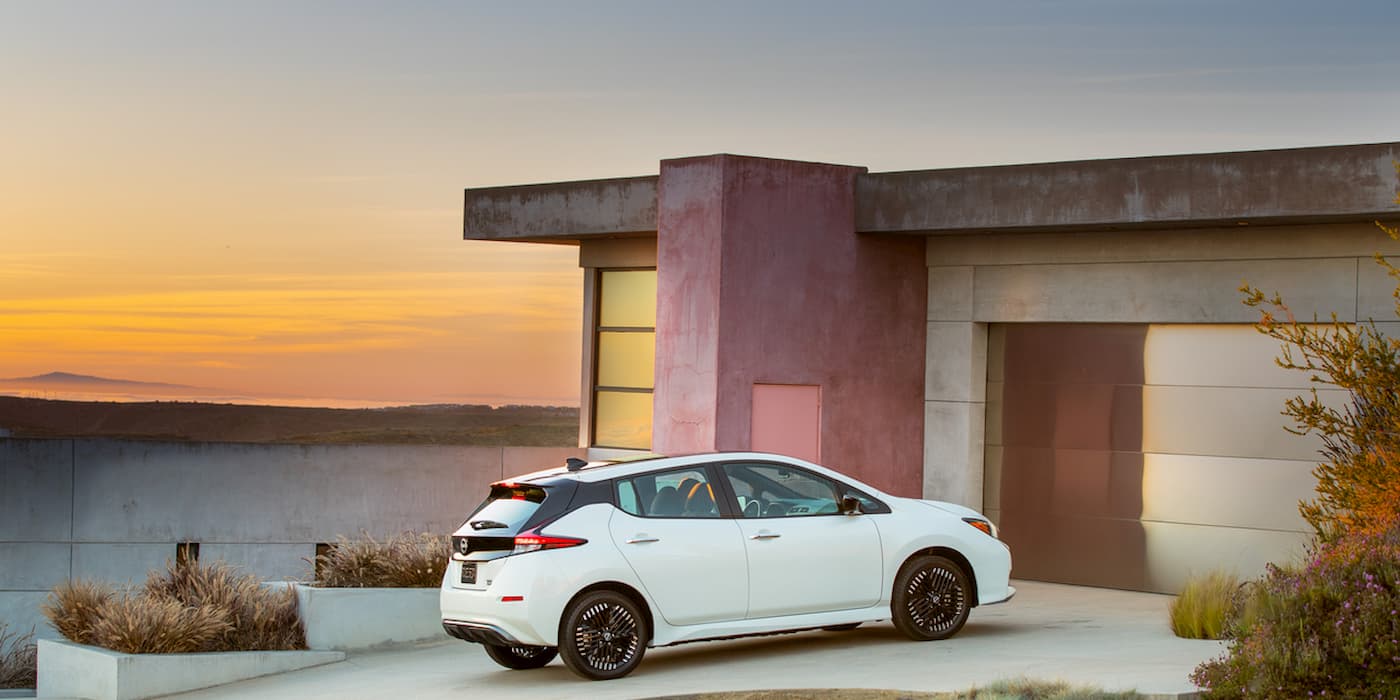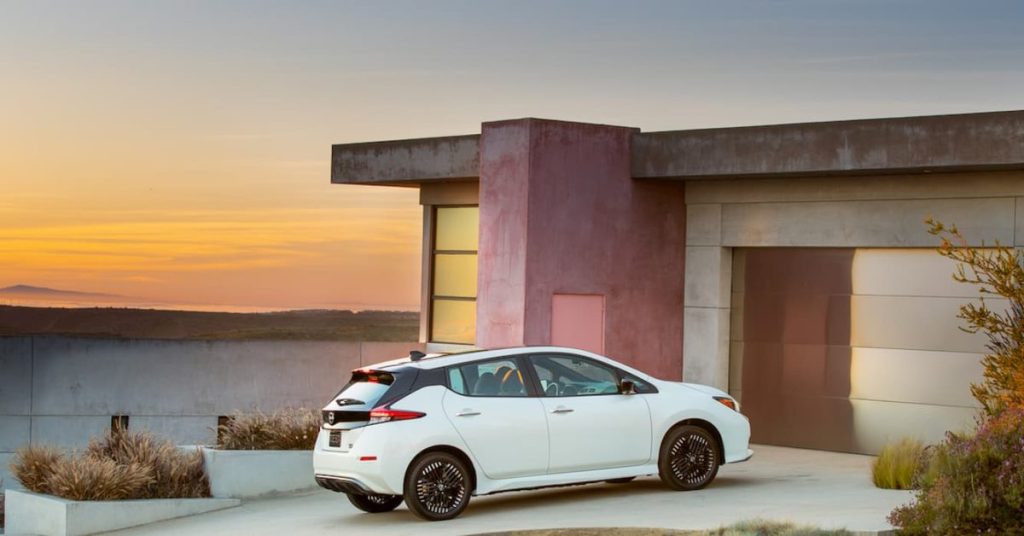
A bill has been introduced in California which would require all EVs to have bidirectional charging capability starting in model year 2027.
The bill is numbered SB 233, introduced in the California Senate by Senator Nancy Skinner, who represents the Oakland area, just north of Tesla’s factory in Fremont; it has a lot of organizations supporting it.
It would require all new electric vehicles to be “bidirectional capable” by model year 2027.
The bill doesn’t specifically define “bidirectional-capable” and directs the California Energy Commission to convene a work group and produce a report on the bidirectional capabilities of various vehicles. This would likely include vehicle-to-grid capability, which means that the car’s battery can feed energy into the electrical grid (or a microgrid), much the same way that a home solar system does when it produces more than a home can consume.
There are other types of bidirectional usage available for EVs, notably vehicle-to-load and vehicle-to-home. V2L is the most limited type and typically has lower peak draw capability – for example, the 1.8kW capability on the Kia Niro EV. V2H allows homeowners to power their home with a car’s battery, much like a Tesla Powerwall might work or like Ford’s “Intelligent Backup Power” system.
Another umbrella term for all of this is “vehicle-to-everything,” or V2X.
The bill is meant to help California’s grid tackle challenges with peak loads. As climate change makes temperatures hotter, California’s grid is often overtaxed on the hottest summer days, which are becoming more numerous. Even worse, natural gas peaker plants are the highest-polluting form of electricity California consumes, and these need to be used at peak times in order to deal with high demand.
Electric cars can be a solution to this problem, since they could function as a distributed backup system for the grid. With incentives to charge overnight (utilities give cheaper rates for night charging) and additional incentives to discharge a battery when demand is high, EV owners could help the grid, the air, and also potentially their pocketbooks by buying electricity when it is cheap and putting it back onto the grid when it’s expensive.
California has already moved to incentivize grid-connected storage with its recent changes to its solar net metering program. In a change that was controversial for many rooftop solar advocates, the new 3.0 net metering provision gave higher incentives to stationary battery storage and fewer incentives to normal nonbattery rooftop solar installations.
But there aren’t a lot of V2G-capable cars out there. Currently, only one EV on the market is fully V2G capable and has an available charger to unlock that capability for fleets. That car is also the oldest EV on the market – the Nissan Leaf, which was introduced in 2011 and has been equipped with bidirectional charging capability since 2013. But it only finally got its charger last September, several years after introduction and four years after Nissan partnered with Fermata Energy to deliver this charger.
Other vehicles have V2L or V2H capabilities (or have been promised to eventually have V2G capabilities), but only one is fully V2G capable in the US at the moment.
The bill has already been through two committees (Transportation and Energy, Utilities and Communications), during which it has been watered down significantly. Earlier versions of the bill would have also applied to all electric vehicle supply equipment (chargers), had specific incentives for bidirectional-capable EVs, and may have required these vehicles to use interoperable standards, but these aspects have all been removed as the bill has been amended.
Next, it has to go through the Appropriations committee, then pass through the state Senate and Assembly, and get signed by the governor – so there’s a lot more to go, with the potential that anything could be changed by more amendments.
Then many specifics of implementation would be left up to the California Air Resources Board, California Energy Commission, and California Public Utilities Commission, and the work group convened to study this issue. This includes potentially exempting certain vehicles from the requirements if they are found not to have a “likely beneficial bidirectional-capable use case.”
Electrek’s Take
V2G hasn’t really taken off with consumers, not solely because there aren’t many vehicles available that allow it but also because it’s not all that easy to use. You can’t just plug your car into an outlet and use it – you need to have a grid interconnect, a system which manages the charging and discharging of your vehicle, and so on.
So far, V2G has been more of a curiosity or potentially something for fleets which have large amounts of dispatchable power, but not really something that consumers can take advantage of.
A system like Tesla’s Virtual Power Plant, which connects Powerwall owners together into a large, automatically-dispatchable reserve of power for the grid (all while making those Powerwall owners money), would make it easier for consumers to use their cars in this way.
And having the force of law behind it, requiring all vehicles to be capable of this, could just be the kick-start needed to make these widespread. V2G definitely benefits from a network effect, where it becomes more useful the more people participate.
There’s no real point to a single person discharging their car into the grid, but when millions of cars are involved, you could work to flatten out the famous “duck curve,” which describes the imbalance between electricity supply and demand. We hear a lot about “intermittency” as the problem with wind and solar, and grid storage as the solution to that, so being able to immediately switch on gigawatt-hours worth of installed storage capacity would certainly help to solve that problem.
And that could be worth a tremendous amount of money to the grid. Not only does it eliminate peaker plant usage, which is costly both economically and environmentally, but it also saves money on grid storage installation and helps to avoid costly and even deadly widespread power outages. These benefits could be thought to balance out any cost of additional incentives for V2G-capable cars. But many of those benefits are had simply by charging the car at the right time, which helps to balance out peaks and troughs on its own.
The question of cost is important. This could increase the cost of EVs, and certainly of electrical charger installations. Will the incentive be enough to make up for this increased cost for consumers? Will enough people install grid interconnections to make this useful? And how can they even do so, when there’s a massive backlog of people waiting for grid interconnections to be installed?
And with 2027 coming so soon, do automakers have time to implement this, given that Nissan’s system took more than a decade to get a V2G-capable charger commercially available in the US? Tesla’s VP of Powertrain and Energy, Drew Baglino, recently said it could have bidirectional charging in two years, and immediately afterward, CEO Elon Musk stepped in to say that he thought nobody would want to use bidirectional charging.
This brings up a point: It still remains to be seen if car owners would accept having their car’s charge controlled by an algorithm. People are already obsessed with buying cars that have much more range than they need, so coming back to a car and finding out it’s got 100 fewer miles than you left it at might rattle some owners. This is solvable by setting minimum thresholds in an app, but that could also limit the overall usefulness of the system to the grid.
While this is a great idea that could solve many problems for California and elsewhere, we could see it being difficult to implement unless the system is made easy to use, easy to install, and people are properly incentivized to use it in a manner that is understandable to a public that doesn’t know the difference between a kilowatt and a kilowatt-hour. State regulators will have their work cut out for them to design these regulations by the end of 2024 as the bill describes, but if they get it right, this could finally give us the V2G dream we’ve been thinking of for so long.
FTC: We use income earning auto affiliate links. More.

